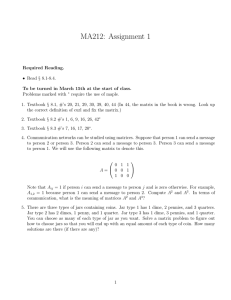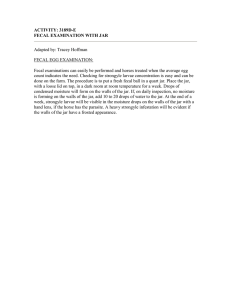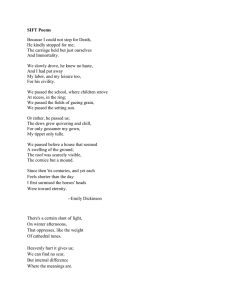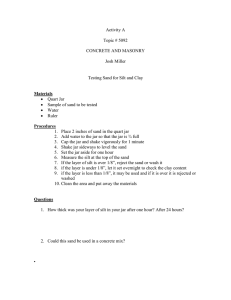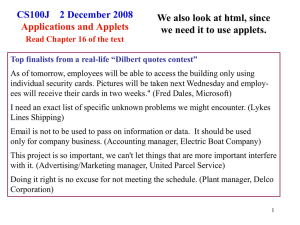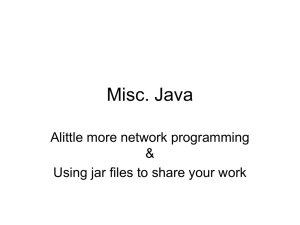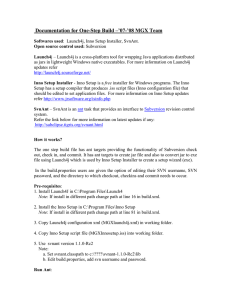Factorials
advertisement
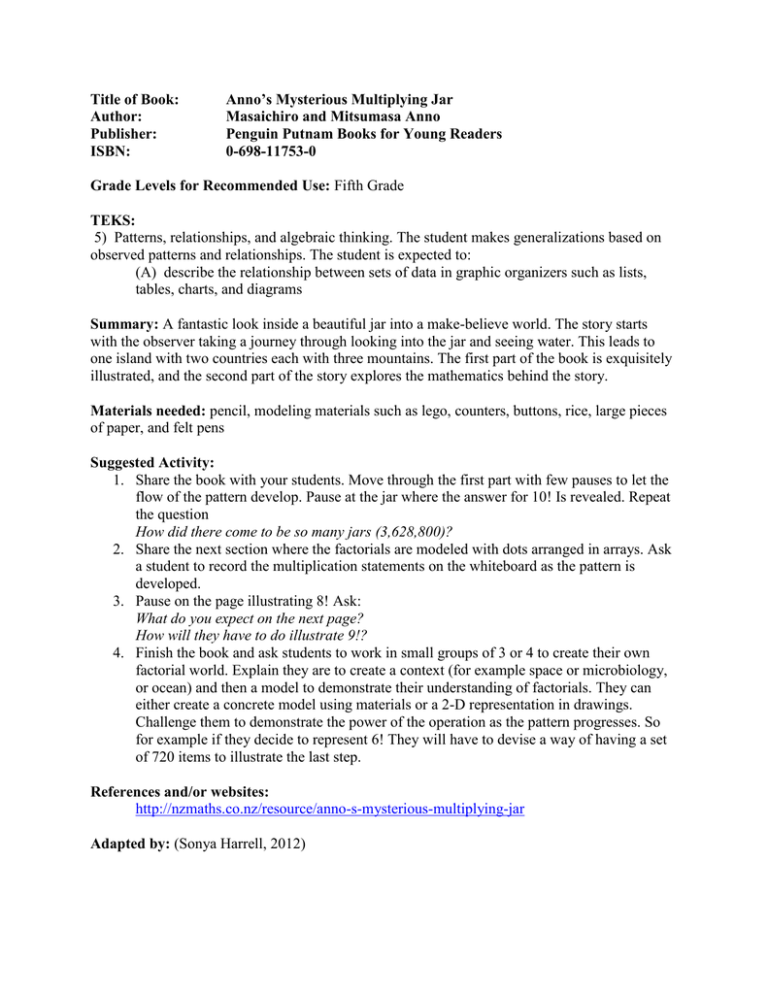
Title of Book: Author: Publisher: ISBN: Anno’s Mysterious Multiplying Jar Masaichiro and Mitsumasa Anno Penguin Putnam Books for Young Readers 0-698-11753-0 Grade Levels for Recommended Use: Fifth Grade TEKS: 5) Patterns, relationships, and algebraic thinking. The student makes generalizations based on observed patterns and relationships. The student is expected to: (A) describe the relationship between sets of data in graphic organizers such as lists, tables, charts, and diagrams Summary: A fantastic look inside a beautiful jar into a make-believe world. The story starts with the observer taking a journey through looking into the jar and seeing water. This leads to one island with two countries each with three mountains. The first part of the book is exquisitely illustrated, and the second part of the story explores the mathematics behind the story. Materials needed: pencil, modeling materials such as lego, counters, buttons, rice, large pieces of paper, and felt pens Suggested Activity: 1. Share the book with your students. Move through the first part with few pauses to let the flow of the pattern develop. Pause at the jar where the answer for 10! Is revealed. Repeat the question How did there come to be so many jars (3,628,800)? 2. Share the next section where the factorials are modeled with dots arranged in arrays. Ask a student to record the multiplication statements on the whiteboard as the pattern is developed. 3. Pause on the page illustrating 8! Ask: What do you expect on the next page? How will they have to do illustrate 9!? 4. Finish the book and ask students to work in small groups of 3 or 4 to create their own factorial world. Explain they are to create a context (for example space or microbiology, or ocean) and then a model to demonstrate their understanding of factorials. They can either create a concrete model using materials or a 2-D representation in drawings. Challenge them to demonstrate the power of the operation as the pattern progresses. So for example if they decide to represent 6! They will have to devise a way of having a set of 720 items to illustrate the last step. References and/or websites: http://nzmaths.co.nz/resource/anno-s-mysterious-multiplying-jar Adapted by: (Sonya Harrell, 2012)

